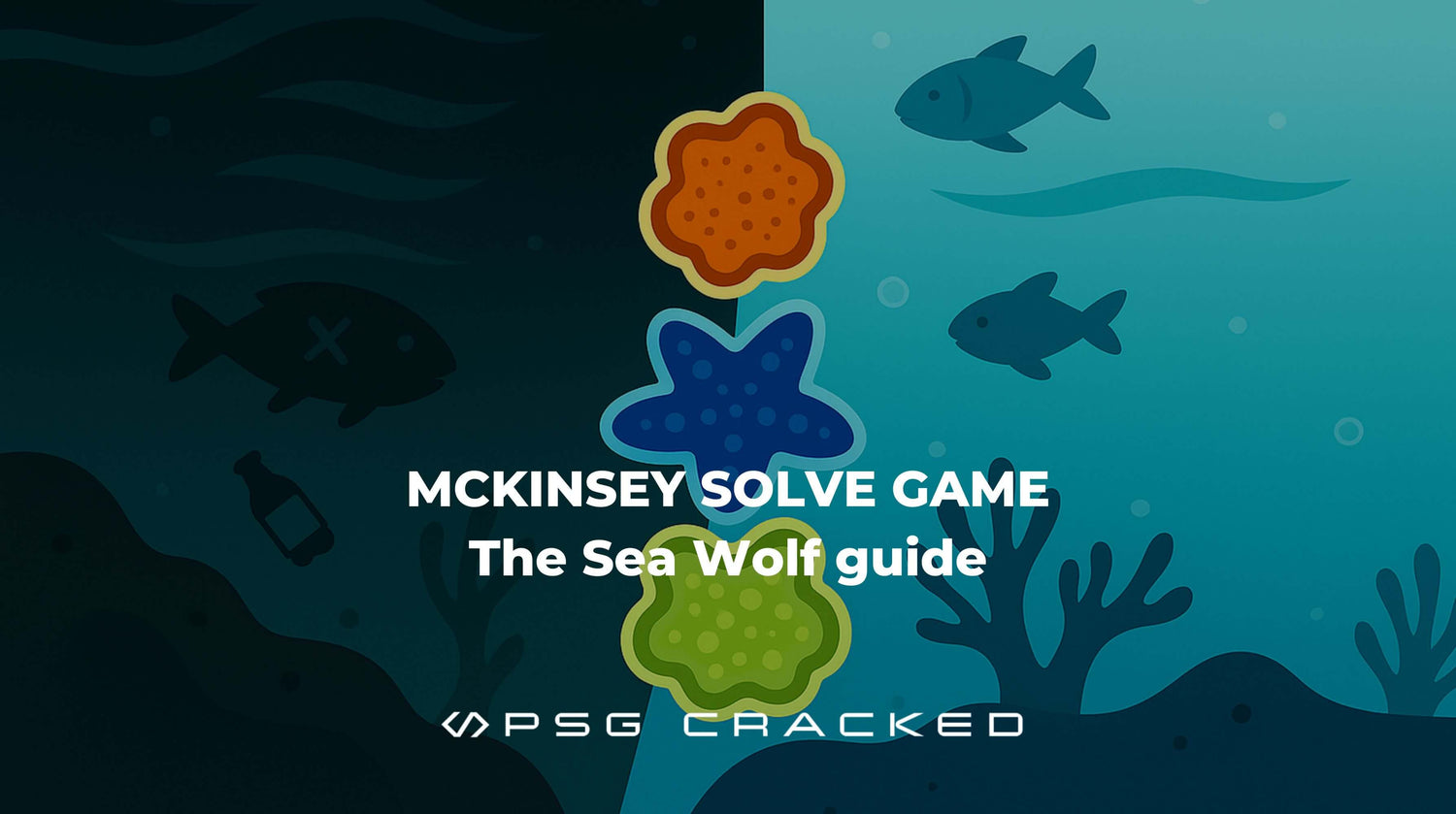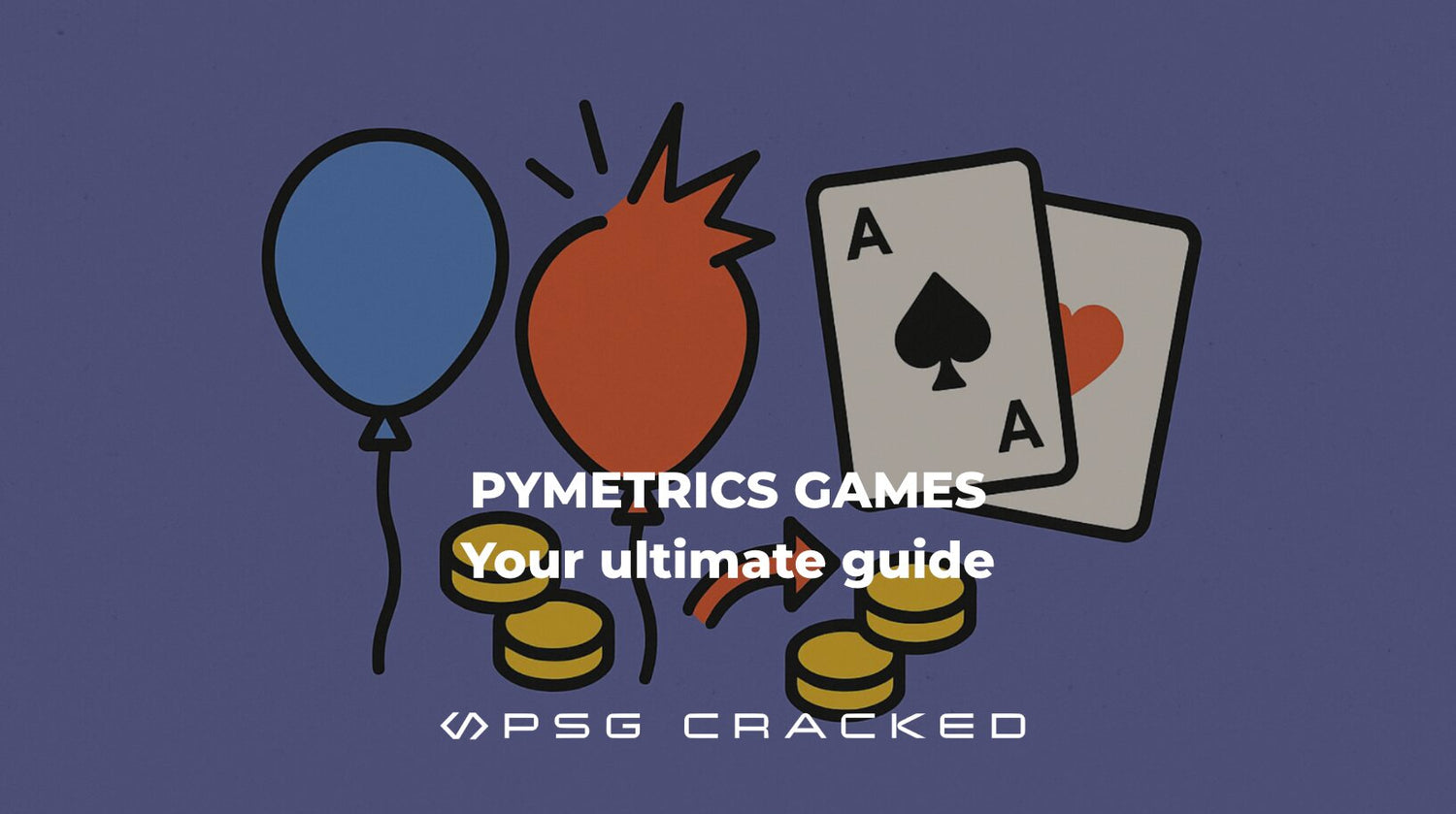As we have seen in McKinsey PSG article, this test is a mosaic of intricately designed mini games. Each game is a unique puzzle, crafted to assess different facets of a candidate's cognitive abilities.
Let's delve into the details of these mini games, uncovering their essence and offering insights into cracking them.
Ecosystem Building Game
The Ecosystem Building Game is one of the most prominent mini games within the McKinsey Problem Solving Game. Designed to test a candidate's ability to create and maintain balance in a dynamic environment, this game offers a unique blend of strategy, analysis, and foresight.
Ecosystem Building overview & description
Set against the backdrop of either a terrestrial or marine environment, candidates are tasked with the challenge of constructing a sustainable ecosystem. The game presents a variety of conditions such as temperature, humidity, and soil acidity for terrestrial settings, or depth, currents, and salinity for marine ones.
From a diverse pool of 39 species, candidates must judiciously select eight, ensuring that they not only survive but also thrive in the chosen environment. The true essence of the game lies in establishing a balanced food chain, where each species has its role, ensuring the ecosystem's overall health and longevity.
How to crack Ecosystem Building
Success in the Ecosystem Building Game hinges on a candidate's ability to meticulously analyze and match species profiles with the conditions of the chosen location. Here are some strategies to excel:
- understand the species: before making selections, thoroughly review the profiles of available species. Understand their dietary needs, predators, and the conditions they thrive in.
- construct a balanced food chain: whether you opt for a top-down (starting from apex predators) or bottom-up (starting from primary producers) approach, ensure that each species has enough food sources and that predators don't overconsume their prey.
- monitor and adjust: as the ecosystem evolves, be prepared to make adjustments. If a species is dwindling, it might be a sign that it's being over-predated or that its food source is scarce.
- use external tools: given the game's complexity, using an external device for quick calculations can be beneficial. This can help in ensuring that the caloric needs of each species are met, and that the ecosystem remains balanced.
- stay flexible: while having a strategy is crucial, be prepared to adapt based on the game's feedback. If one approach isn't working, don't hesitate to pivot and try a different tactic.
In essence, the Ecosystem Building Game is a test of foresight, strategy, and adaptability. By understanding the intricacies of each species and the environment, candidates can construct a thriving ecosystem, showcasing their problem-solving prowess to McKinsey.
Redrock Study Game
The Redrock Study Game stands as a latest game introduced within the McKinsey Problem Solving Game. This mini game delves deep into ecological research, requiring candidates to not only analyze data but also make informed decisions based on their findings.
Redrock overview & description
Set on a picturesque island, the Redrock Study Game immerses candidates in the world of wolf packs. The primary objective is to understand the behavior of these wolf packs and ensure their harmonious coexistence with other species, particularly deer.
As candidates navigate the game, they are presented with vast amounts of data, ranging from the wolves' hunting patterns to their interactions with other species. The challenge lies in sifting through this data, identifying significant patterns, and making decisions that ensure the balance and survival of the wolf packs in their natural habitat.
How to crack Redrock Study
Mastering the Redrock Study Game requires a blend of analytical acumen and strategic foresight. Here are some key strategies to excel:
- data analysis is paramount: begin by meticulously reviewing the data presented. Look for patterns, correlations, and anomalies that could provide insights into the wolves' behavior and their relationship with other species. Here you can have more insights about Redrock's math.
- organize your findings: as you sift through the data, drag significant data points into a notebook. This organized approach ensures that you have all the relevant information at your fingertips when making decisions.
- balance is key: the game's primary objective is to ensure the balance between wolf packs and other species. If wolf numbers grow too large, they might overhunt their prey, leading to an imbalance. Conversely, if their numbers dwindle, it could indicate threats from other predators or environmental factors.
- post-game questions: after navigating the game, candidates are presented with up to 10 multiple-choice questions based on their findings. These questions might touch upon the best graphical representation of data or hypothetical scenarios regarding changes in the wolf population. Ensure you understand your data thoroughly to answer these questions accurately.
- stay adaptable: the Redrock Study Game is dynamic, with data and scenarios evolving as you progress. Be prepared to adjust your strategies and decisions based on new information.
In a nutshell, the Redrock Study Game is a masterclass in data analysis, decision-making, and ecological balance. By understanding the intricacies of the wolf packs and their environment, candidates can showcase their analytical prowess and strategic thinking, key traits McKinsey values in its consultants.
Sea Wolf game (former Ocean Cleanup)
The Sea Wolf Game stands as the latest addition to the McKinsey Problem Solving Game, introduced in 2024. This challenging mini-game delves into marine environmental remediation, requiring candidates to strategically select and combine microorganisms to address ocean pollution across multiple contaminated sites.
Sea Wolf overview & description
Set against the backdrop of polluted ocean environments, the Sea Wolf Game immerses candidates in the world of marine bioremediation. The primary objective is to identify and deploy the most effective microbial combinations to clean plastic contamination from three distinct ocean sites within a 30-minute timeframe.
As candidates navigate the game, they are presented with complex data about several different microbe types, each featuring specific attributes such as permeability, rigidity, size, and traits like heat resistance, pH tolerance, and photosensitivity. The challenge lies in analyzing these characteristics, categorizing microbes strategically, and building optimal treatments that meet strict attribute ranges while managing desired and undesired traits across multiple contaminated sites.
How to crack The Sea Wolf
Mastering the Sea Wolf Game requires a blend of analytical precision, strategic resource management, and efficient time allocation. Here are key strategies to excel:
- understand the microbe profiles: before making selections, thoroughly analyze each microbe's attributes and traits. Pay close attention to the target ranges for permeability, rigidity, and size, as well as the desired traits you must include and undesired traits you must avoid.
- master the categorization phase: during the profiling stage, strategically categorize the 10 presented microbes into "keep" (suitable for current site), "save" (better for upcoming sites), or "discard" (unsuitable). Use the preview information about the next site's requirements to make informed decisions about which microbes to save for later phases.
- build balanced prospect pools: when selecting your 4 additional microbes from the groups of three, choose combinations that provide flexibility for meeting attribute averages and trait requirements. A well-balanced pool significantly increases your chances of creating effective treatments.
- calculate attribute averages carefully: ensure the average attributes of your selected 3 microbes fall within the required ranges. Remember that treatment effectiveness reduces by 20% for each violation: attributes outside range, presence of undesired traits, or absence of desired traits.
- manage time strategically: with 30 minutes for three sites, allocate approximately 10 minutes per site. Use the untimed tutorial phase extensively to familiarize yourself with the interface and mechanics before the actual assessment begins.
- leverage in-game resources: utilize the expandable legend in the bottom-right corner to quickly reference microbe characteristics, and access the Help section for rule clarification when needed.
In essence, the Sea Wolf Game is a test of analytical thinking, strategic planning, and resource optimization under time pressure. By understanding the intricacies of microbial characteristics and environmental requirements, candidates can construct effective treatments, showcasing their problem-solving acumen and ability to manage complex, multi-variable challenges that McKinsey values in its consultants.
Plant Defense Game (99% phased out)
The Plant Defense Game introduces candidates to a unique challenge that blends strategy with ecological understanding. This game underscores the importance of proactive defense and foresight in ensuring the survival of a native plant species.
It is currently being phased out, most of times replaced by Redrock Study Game.
Plant Defense overview & description
Set on a grid-based environment, the Plant Defense Game tasks candidates with the mission of protecting a native plant from a horde of invasive species. These invaders, driven by the intent to reach and harm the native plant, follow specific paths and patterns.
The game's essence lies in strategically placing defenses, including predators and terrain barriers, to prevent these invaders from reaching their target.
How to crack the game
Success in the Plant Defense Game hinges on anticipation, strategy, and adaptability. Here are some pivotal strategies to ensure victory:
- analyze the invaders' Path: before placing defenses, study the path of the invaders. Understanding their movement patterns allows for more effective placement of barriers and predators.
- create "kill zones": use terrain barriers to funnel invaders into specific areas where predators can target them effectively. These "kill zones" can decimate large groups of invaders, ensuring the native plant's safety.
- diversify your defenses: relying solely on one type of defense can be a downfall. Utilize a mix of predators and barriers to create a multi-layered defense system.
- stay vigilant and adapt: as the game progresses, the intensity and patterns of the invaders might change. be prepared to adjust your defenses, relocate predators, and adapt to the evolving challenges.
- prioritize threats: some invaders might pose a greater threat to the native plant than others. Identify these high-threat invaders and strategize to eliminate them first.
In essence, the Plant Defense Game is a test of strategic foresight, adaptability, and understanding of ecological interactions. By effectively leveraging defenses and anticipating threats, candidates can protect the native plant and showcase their problem-solving skills to McKinsey.
IMPORTANT: Candidates should not expect to see the Plant Defense Game but instead focus on preparing for the Ecosystem Game and Redrock Study.
Alternative mini games (99% phased out)
While the McKinsey Problem Solving Game is primarily known for its mainstay challenges like the Ecosystem Building and Redrock Study, it also encompasses a range of other alternative mini games. These games, though less common, are equally rigorous and designed to test a myriad of cognitive abilities.
The alternative mini games present diverse scenarios, each with its unique set of challenges and objectives. For instance:
- Disaster management: in this game, candidates are presented with environmental data and tasked with predicting potential natural disasters. The challenge lies in strategizing to protect animal populations from these impending calamities.
- Disease management: here, candidates delve into the world of epidemiology. They must identify diseases affecting an ecosystem and then devise a comprehensive treatment or containment plan to ensure the health and balance of the ecosystem.
- Migration management: this game tests candidates' ability to guide a group of animals from one point to another. The objective is to optimize the journey for survival, ensuring that the migrating group has adequate resources and faces minimal threats.
How to crack these games
Success in these alternative mini games requires a blend of analytical thinking, adaptability, and strategic foresight. Here are some general strategies:
- understand the game's objective: before diving into strategies, ensure you have a clear understanding of the game's primary objective. This clarity will guide your decisions and actions.
- analyze data thoroughly: whether predicting disasters or identifying diseases, data analysis is crucial. Review the provided data meticulously, looking for patterns, correlations, and anomalies.
- plan and prioritize: given the diverse challenges of these games, planning becomes paramount. Prioritize tasks based on their urgency and importance, ensuring you address the most critical challenges first.
- stay adaptable: the dynamic nature of these games means that scenarios can change rapidly. Be prepared to adjust your strategies based on new information or unexpected challenges.
Real-world simulations
In conclusion, the mosaic of mini games within the McKinsey Problem Solving Game is far more than a mere set of challenges; it's a mirror reflecting the multifaceted nature of real-world consulting scenarios.
Excelling in these games demands more than sharp analytical skills; it requires an alchemy of strategic insight, adaptability, and the ability to make nuanced decisions under pressure. Wanna go deeper? Check the article on "how to prepare for McKinsey Solve" with actionable insights.
Each game, from the complex ecosystem management in the Ecosystem Building Game to the data-driven decision-making in the Redrock Study, serves as a unique canvas, testing and honing the diverse skill set vital for a successful consultant.
These simulations are not just gateways to a career in consultancy but are formative experiences, sculpting the problem-solving abilities essential in the dynamic, often unpredictable world of business strategy. As candidates navigate through these engaging and thought-provoking games, they showcase not just their intellectual prowess but also their potential to flourish in the demanding and ever-evolving realm of McKinsey’s consulting.




